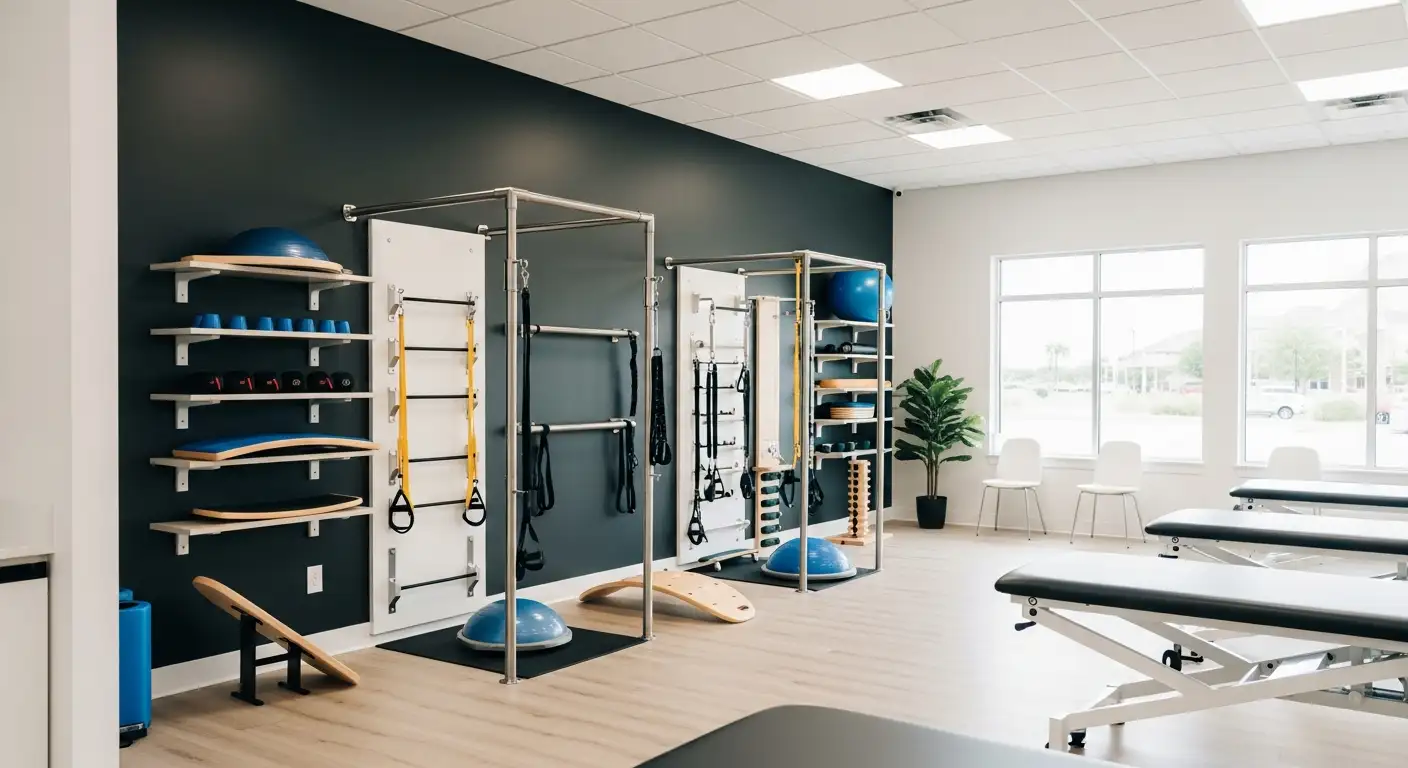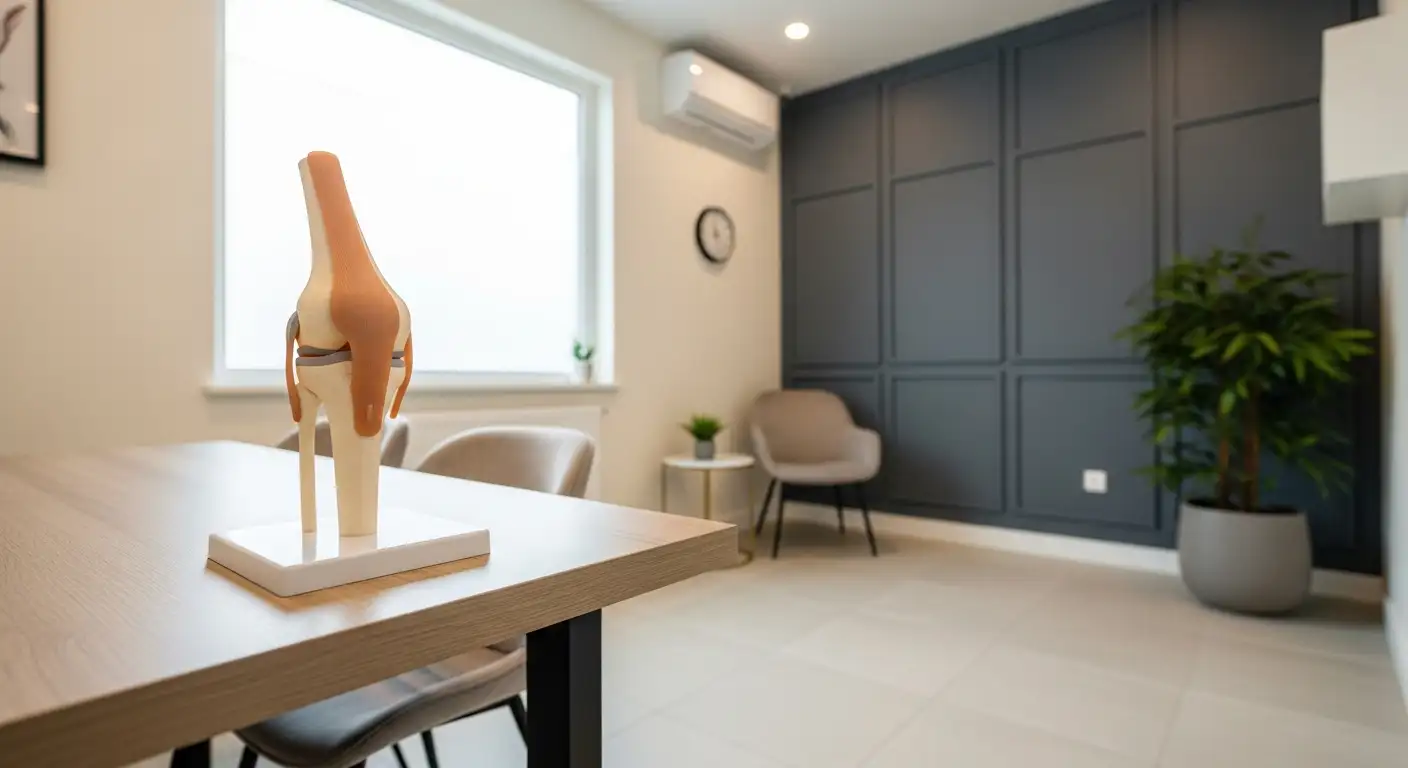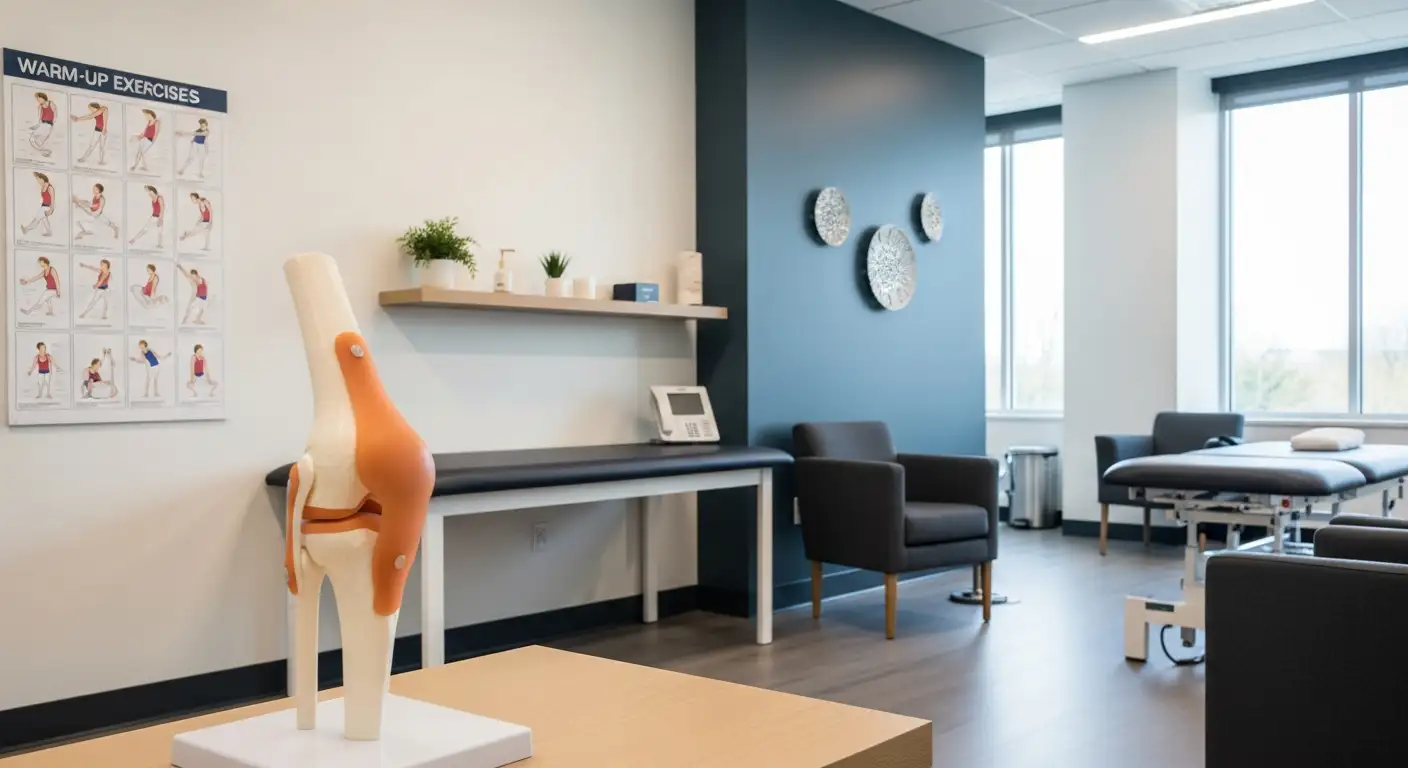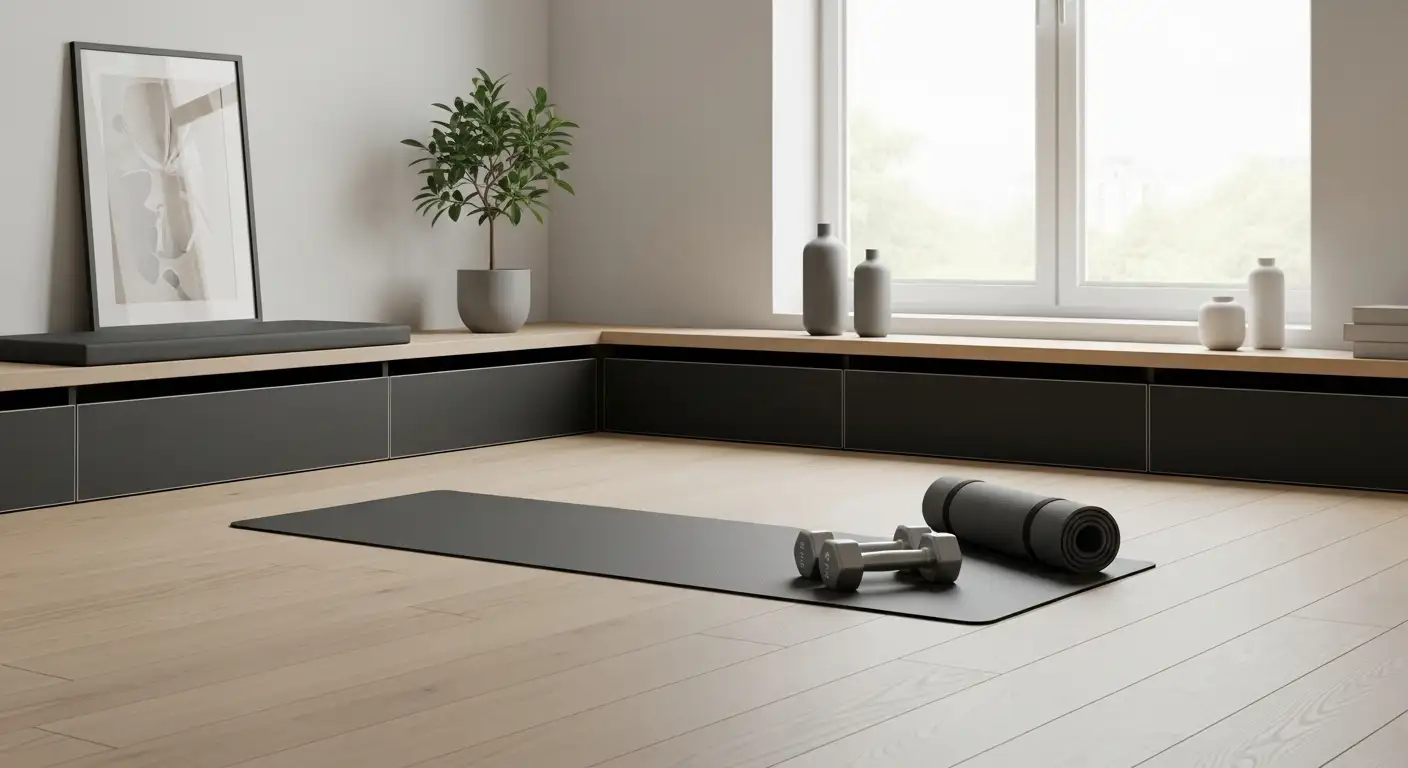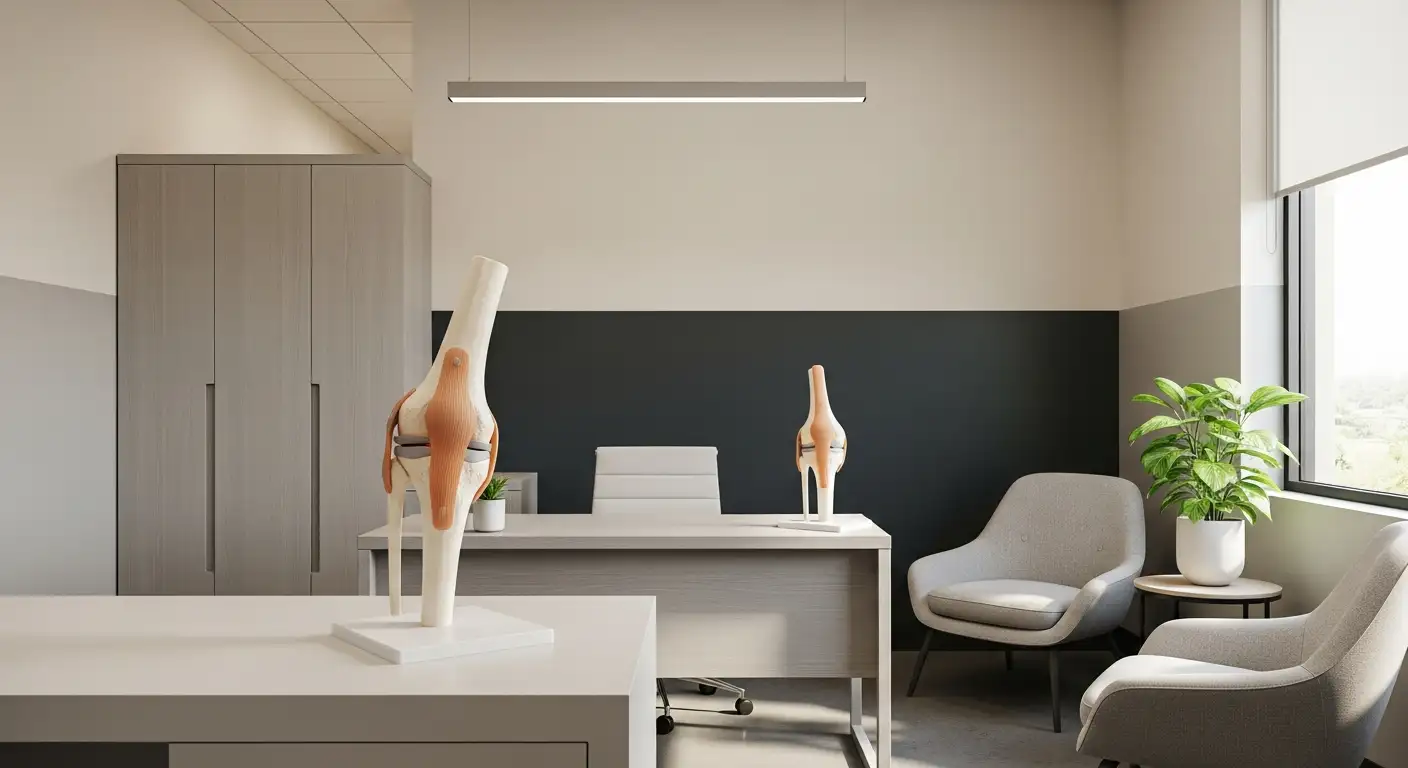Understanding Knee Pain
Knee pain is a common complaint among people of all ages. It can stem from a variety of causes, including injury, overuse, or an underlying health condition. When the pain is located at the top of the knee and is particularly noticeable when bending, it can restrict movement and impede daily activities.

Common Causes of Knee Pain
Experiencing pain at the top of the knee when bending can be attributed to many factors. Conditions such as tendinitis, muscle strain, bursitis, and arthritis are common culprits [1].
Other potential causes include:
- Osteoarthritis: This degenerative joint disease leads to the breakdown of joint cartilage and underlying bone, causing pain and stiffness.
- Posterior cruciate ligament (PCL) injury: The PCL is one of four ligaments that hold the knee in place. If it gets injured, it can lead to knee pain.
- Patellar tendinitis: Also known as jumper's knee, this is an injury to the tissue connecting the kneecap to the shinbone.
- Patellar dislocation: This occurs when the kneecap slides out of position, causing pain and swelling.
- Meniscus tears: The meniscus is a piece of cartilage that provides a cushion between the femur (thigh bone) and tibia (shin bone). It can be torn if the knee is twisted while bearing weight.
- Patellofemoral pain syndrome: This condition occurs when the cartilage under the kneecap is damaged or worn out.
Symptoms and Diagnosis
The specific symptoms associated with top of knee pain when bending can vary depending on the underlying cause. They might include swelling, stiffness, redness, warmth to the touch, weakness or instability, popping or crunching noises, and inability to fully straighten the knee.
Diagnosing the cause of knee pain typically involves a physical examination and a review of the patient's medical history. In some cases, imaging tests such as X-rays, MRIs, or CT scans may be required. It's important to consult with a healthcare professional for a proper diagnosis and treatment plan to avoid exacerbating the condition.
Addressing knee pain early on can help prevent further damage and discomfort. Depending on the cause, treatments for knee pain can range from lifestyle changes and physical therapy to medication and, in some cases, surgery. It's crucial to understand the cause of your knee pain to identify the best treatment options for your specific needs.
Knee Pain and Physical Activity
Physical activity plays a crucial role in managing knee pain and improving knee health. However, the effectiveness of exercise in reducing knee pain is highly dependent on the type of activity and the way it is performed.
Impact of Exercise on Knee Pain
Exercise can greatly enhance the strength and flexibility of the muscles surrounding the knee, thereby reducing the likelihood of experiencing top of knee pain when bending. Regular exercises like squats and lunges can significantly enhance muscular strength, reduce pressure on the knees, and improve overall stability.
Moreover, low-impact cardio exercises such as swimming, cycling, and using an elliptical machine can help improve the strength and flexibility of the muscles around the knee without putting excessive stress on the joint, thus reducing pain during knee bending activities.
Role of Proper Form
Proper form is a critical element to consider when performing any physical activity, especially for those who experience knee pain. Adopting proper bending form can significantly reduce knee pain. Recommended practices include bending the knees deeply, aligning them with the feet to alleviate stress on the joint, standing up straight, keeping the back straight during bending, and avoiding twisting or turning while lifting heavy objects.
Additionally, incorporating balance and stability exercises like single-leg stands, side leg raises, and step-ups into a workout routine can help improve knee alignment, reduce tension on the knees, and alleviate pain during movements such as bending or squatting [5].
In conclusion, exercise and proper form are essential aspects of managing and preventing knee pain. By incorporating targeted exercises into a regular fitness routine and adhering to correct form while undertaking physical activities, it's possible to reduce the occurrence and severity of knee pain, enhancing overall knee health and function.
Treatment for Knee Pain
When it comes to managing top of knee pain when bending, there are various treatment paths that can be explored. The appropriate course of action often hinges on the underlying cause and the severity of the condition.
Non-Invasive Treatment Options
Before considering surgical interventions, doctors generally recommend non-invasive treatment options. These include:
- Physical Therapy: This can help strengthen the muscles around the knee and improve flexibility, which can alleviate pain and prevent future injuries.
- Medications: Over-the-counter pain relievers can be used to manage moderate knee pain. For more severe pain, prescription medications may be necessary.
- Injections: In some cases, corticosteroid or hyaluronic acid injections can be administered to reduce inflammation and improve joint lubrication.
If knee pain persists for more than a couple of days, causes redness or swelling, or is severe, it's crucial to seek medical advice. Knee pain can be a sign of various medical conditions, and accurate diagnosis is key to effective treatment.
When to Consider Surgery
Surgery is typically considered when non-invasive treatments have not been effective, and the knee pain is severe or debilitating. The type of surgery will depend on the specific condition causing the knee pain. For instance, arthroscopic surgery can be used to repair torn ligaments or remove loose bone fragments, while total knee replacement may be necessary for severe arthritis.
It's important to have a thorough discussion with your healthcare provider about the potential benefits and risks of surgery. Factors such as your overall health, age, activity level, and personal preferences will influence the decision.
Remember, treatment for top of knee pain when bending is not a one-size-fits-all approach. It's important to work closely with your healthcare provider to create a personalized treatment plan that addresses your specific needs and promotes long-term knee health.
Prevention Strategies for Knee Pain
Preventing knee pain, particularly "top of knee pain when bending," requires a comprehensive approach involving strength training and improving flexibility and balance.
Importance of Strength Training
One of the most effective ways to prevent knee pain is by strengthening the muscles that support the knee. This includes muscles like the quadriceps, hamstrings, and hip abductors. Strengthening these muscles can enhance stability, provide cushioning, and reduce pressure on the knees during bending activities, ultimately preventing injuries.
Exercises such as lunges, squats, hip extensions, knee circles, and side leg lifts can help in stretching the knee joint and increasing stability over time. Physical therapists also often recommend exercises like leg extensions, hamstring curls, calf raises, and heel raises. These exercises not only strengthen the muscles around the knee but also improve knee function, reducing pain during activities that involve bending the knee [4].
Role of Flexibility and Balance
Flexibility and balance play a crucial role in preventing knee pain. Regularly exercising to improve knee flexibility and range of motion through stretching and strength training can be beneficial. These exercises help enhance the stability of the knee joint over time, reducing the risk of injury and pain during bending activities [3].
Low-impact cardio exercises such as swimming, cycling, and using an elliptical machine can help improve the strength and flexibility of the muscles around the knee without putting excessive stress on the joint. This can reduce pain during knee bending activities and contribute to overall knee health.
Incorporating these exercises and activities into a regular routine can help reduce the risk of experiencing "top of knee pain when bending" and contribute to overall knee health. It's always recommended to consult with a healthcare professional or physical therapist when starting a new exercise routine to ensure it's safe and suitable for individual fitness levels and health conditions.
Addressing Knee Pain with Lifestyle Changes
Often, lifestyle changes can significantly impact the management and prevention of knee pain. Two crucial aspects to consider are dietary habits and weight management.
Dietary Considerations
When it comes to knee pain, diet plays an important role. Certain foods are known to have anti-inflammatory properties, which can help alleviate pain and discomfort. These include foods rich in omega-3 fatty acids (such as fish and flaxseeds), fruits and vegetables high in antioxidants, and spices with anti-inflammatory compounds like turmeric and ginger.
On the other hand, some foods can contribute to inflammation and exacerbate knee pain. These include processed foods, sugary drinks, and foods high in saturated fats. A balanced diet that prioritizes whole, nutrient-rich foods can help manage knee pain and promote overall health.
It's important to note that everyone's body reacts differently to various foods. Therefore, it's beneficial to observe how one's body responds to different dietary changes. If specific foods seem to worsen knee pain, it may be worth discussing with a healthcare professional or a nutritionist.
Importance of Weight Management
Weight management is also a critical factor in dealing with knee pain. Excess weight can put additional strain on the knees, which can lead to increased pain, especially when bending the knee. Therefore, maintaining a healthy weight can alleviate stress on the knee joint and help manage knee pain.
Regular physical activity can aid in weight management. However, it's crucial to choose low-impact exercises that don't exacerbate knee pain, such as swimming, cycling, and using an elliptical machine. Additionally, strength training exercises for the quadriceps, hamstrings, and hip abductors can help reduce knee pain by improving the stability of the knee joint.
It's essential to start any new exercise regimen slowly and gradually increase intensity to avoid potential injuries. It's equally important to use proper form during exercises to prevent undue stress on the knee [3].
If knee pain persists despite dietary changes and weight management efforts, it's important to seek professional help. Chronic knee pain can indicate underlying health issues that require medical attention [3].
In conclusion, addressing knee pain often involves a combination of dietary changes, weight management, and appropriate physical activity. These lifestyle modifications, along with professional guidance, can significantly alleviate the discomfort associated with top of knee pain when bending.
The Impact of Chronic Knee Pain
Understanding the impact of chronic knee pain is essential for managing it effectively. When the top of the knee hurts while bending, it can significantly influence a person's daily life and overall well-being.
Living with Chronic Knee Pain
Living with chronic knee pain can be a challenging experience. It can significantly impact a person's quality of life and daily activities. Pain in the knee while bending can limit mobility, affect sleep, and lead to emotional distress [6]. Furthermore, it can reduce physical activity and increase the risk of developing other health conditions [2].
Chronic top of knee pain when bending can also affect a person's ability to perform daily tasks and participate in activities they enjoy. Over time, this can take a toll on mental well-being, leading to feelings of frustration and helplessness [3].
Seeking Professional Help
Given the serious impact of chronic knee pain, seeking professional help is crucial. Medical professionals can accurately diagnose the underlying cause and develop an appropriate treatment plan [3].
A comprehensive treatment plan may include a combination of therapies, medications, and lifestyle modifications. These can help alleviate the pain, improve function, and enhance the overall quality of life.
Professional guidance can provide effective management strategies for top of knee pain when bending, thus improving the overall quality of life. It's essential to remember that chronic knee pain can be a long-term condition that requires ongoing management. Therefore, continuing to seek professional advice, regularly reviewing treatment plans, and maintaining open communication with healthcare providers are essential steps in effectively managing chronic knee pain.
References
[2]: https://www.mayoclinic.org/diseases-conditions/knee-pain/symptoms-causes/syc-20350849
[3]: https://www.guthrie.org/blog/knee-pain-when-bending-heres-what-you-can-do-about-it
[4]: https://www.healthline.com/health/exercises-for-knee-pain
[5]: https://healthcareassociates.com/7-reasons-your-knee-hurts-when-you-bend-it/
[6]: https://www.healthline.com/health/knee-pain-when-bending
